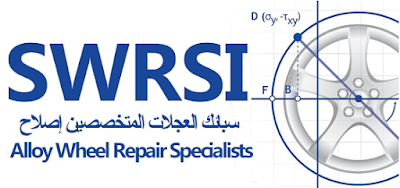
The news Audi is finally bringing the RS 6 Avant superwagon to America might be grabbing the headlines, but that’s not the only RS action heading our way. The RS 7 Sportback returns for 2020 with more power, more performance, and an edgier new look.
The 2020 RS 7 Sportback shares its mild hybrid 4.0-liter twin-turbo V-8 with the freshly redesigned RS 6 Avant. With 591 hp and 590 lb-ft, it delivers 40 hp and 74 lb-ft more than the previous RS 7’s powertrain, which has helped shave 0.3 second from the 0–60 acceleration time. Ordering the optional Dynamic package boosts top speed from an electronically limited 155 mph to 174 mph. The Dynamic Plus package option ups the car’s Vmax to a seriously fast 190 mph.
Performance is up, but so is efficiency. The mild hybrid system’s belt alternator starter can recover up to 12 kW under gentle acceleration and feed it into a lithium-ion battery. If the driver releases the accelerator between 35 and 100 mph, the powertrain management system will either recover more energy or coast with the engine switched off, depending on driving conditions and the battery’s state of charge. In higher gears, at low to medium loads and engine speeds, the engine management system will also deactivate cylinders two, three, five, and eight to further reduce fuel consumption.
The RS 7 Sportback also gets the same chassis upgrades as its wagon brother, including the choice of two suspension systems, optional rear-wheel steering, and optional carbon-ceramic brakes.


The base RS 7 suspension features air springs and electronically controlled shocks, and it’s 50 percent stiffer than the regular A7 setup. In Normal mode, the RS 7 Sportback rides 0.8 inch lower than the regular A7 and snuggles an additional 0.4 inch closer to the tarmac at speeds above 75 mph. The optional RS sport suspension with Dynamic Ride Control uses steel springs and cross-linked electronically controlled shocks that more closely control roll and pitch, and it’s 30 percent stiffer than the RS 7 air suspension in Normal mode
Rear-wheel steering, available with Dynamic package and Dynamic Plus package options, uses yaw and speed data to determine how much steering is needed at both front and rear axles. The rear wheels can be steered up to 5 degrees, counter steering at speeds up to about 60 mph to increase turn-in response and steering with the front wheels at higher speeds to improve stability.
Standard brakes are steel, with 16.5-inch rotors up front and 14.6-inch items at the rear. The optional carbon-ceramic rotors are the same size at the rear but 17.3 inches at the front, where they are clamped by massive 10-piston calipers. The carbon-ceramic setup not only ensures superior brake performance at high speed but also reduces unsprung weight by a substantial 75 pounds. As with the RS 6 Avant, standard wheels are now 21 inches, with 22-inchers optional. The designs of the RS 7 wheels are different from those used on the wagon, however.
Sportback is Audi-speak for hatchback, a body style that’s not popular in the US. But Audi Sport product manager Michael Binder believes the RS 7’s low, sweeping roofline gives it unique visual appeal and versatility. “It has the same passenger capacity as a sedan,” he says, noting that a three-passenger rear seat is now available as an option, “but it looks sporty, almost like a grand turismo.” A grand turismo you can take to Ikea: The luggage capacity expands from 18.9 cubic feet to 49.1 with the split rear seat backs folded flat, and an optional convenience key allows the rear hatch to be opened by foot gesture control.
In visual terms, the 2020 RS 7 Sportback has been given the same aggressive makeover as the RS 6 Avant, with the same scowling front fascia and low-lipped hood. Other changes include a new side sill with inlay, and diffuser-style element that runs across the lower edge of the rear fascia and arches prominently over exhaust outlets. And, like the RS 6 Avant, the RS 7 Sportback is also now a unique-to-RS wide-body car, with unique front fenders, bodyside stampings, and rear door skins that tease the sheetmetal 0.8 inch farther out each side than the regular A7.
Inside are RS sport seats upholstered in leather with a rhombus pattern and RS embossing. A flat-bottomed RS sport steering wheel with larger shift paddles features several multifunction buttons, including the RS mode button, which enables the new Drive Select RS 1 and RS 2 modes. In addition to short-cutting to preselected customizable powertrain and dynamic settings, it automatically opens the RS-specific displays in the Audi Virtual Cockpit, including tire pressure, power, torque, oil temperature, boost pressure, lap times, acceleration and g-forces.
The 2020 RS 7 Sportback is expected to arrive in U.S. Audi dealerships in the second quarter of next year.
The post 2020 Audi RS 7 Sportback First Look Review: Because Not Everyone Wants a Wagon appeared first on MotorTrend.
Source: WORLD NEWS
